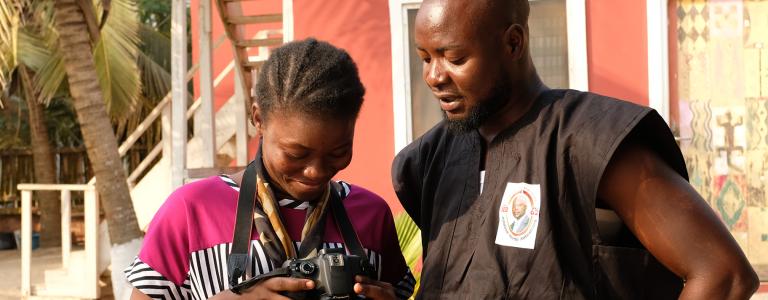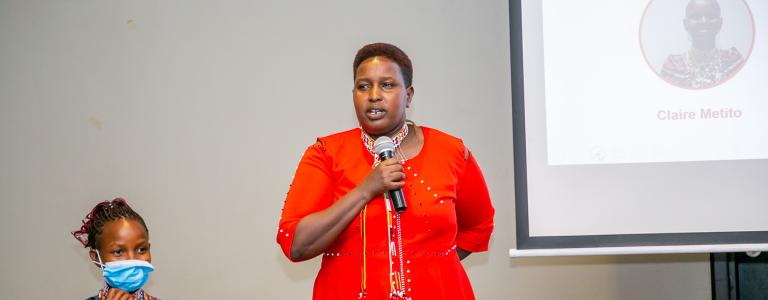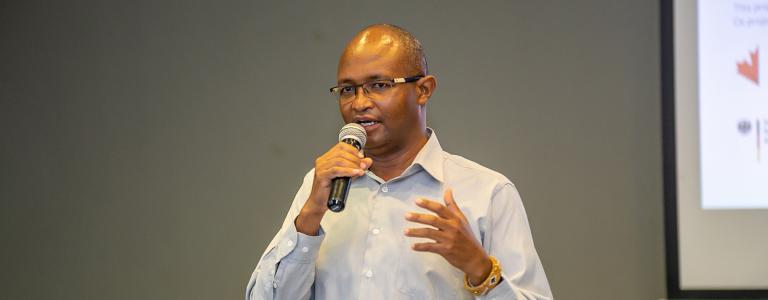Envisioning Resilience: Bringing underrepresented women's voices into planning for climate change adaptation
Meaningful participation by women who are on the front lines of climate change is essential for gender-responsive, locally led adaptation. However, in many contexts, women remain underrepresented in decision making, from local to national levels. Creative solutions are needed to facilitate dialogue, bridge the gap between different knowledge systems, and ensure that investments in climate action yield equitable benefits for people of all genders and social groups.
Established in 2010 under the United Nations Framework Convention on Climate Change (UNFCCC), National Adaptation Plan (NAP) processes enable countries to build the resilience of their ecosystems, economies, and communities to the impacts of climate change. Led by national governments, the NAP process is intended to be participatory, gender responsive, and inclusive of the most vulnerable groups and communities. This approach presents an opportunity to facilitate dialogue between adaptation decision-makers and the people most affected by the impacts of a changing climate. In most countries, government actors recognize that it is important for effective adaptation planning to be informed by a diversity of voices, particularly those of women, who are often underrepresented in decision making. The challenge is how to make these dialogues happen and how to find a common language to talk about climate change, its impacts, and strategies for building resilience.
Enabling Women on the Front Lines of Climate Change to Share Their Stories
Together with Lensational, a non-profit social enterprise that aims to elevate the voices of women from underrepresented groups and communities using visual storytelling, the NAP Global Network provided an opportunity to groups of women in Ghana and Kenya to have their perspectives and lived experiences inform their country’s NAP process.
This pilot initiative was implemented in close collaboration with the Environmental Protection Agency in Ghana and the Climate Change Directorate in Kenya, with financial support from Global Affairs Canada. Participants undertook training in photography and storytelling while learning from experts who helped them link their observations to climate science, enabling them to develop visual stories that documented their experiences with climate change and their visions of resilience. Over a period of 9 months, the Lensational team and professional photographers mentored the trainees, supporting each one as they developed their personal stories while also bringing them together to develop a collective story for the group.
"I feel inspired to document stories about women and how climate change is affecting them. From now to 2030, what is the change, what would be the effect? I want women’s voices to be heard."
Visual Stories as a Basis for Policy Dialogue
"The past couple of years have been very uncertain in terms of climate change, and the uncertainty greatly affects us as women in the way and practice of farming and taking care of livestock. As such, it’s a great opportunity to be able to add our voices to not only inform the priorities of climate change adaptation and planning, but also empower our communities to better prepare for resilience in an ever-changing climate."
"As a policy-maker, I’m seeing the direct link to what is happening at the grassroots where the people at the grassroots actually capture the situation and share it with a wider audience. It gives a true picture, and influences how the policy-makers should decide the actions, strategies, and policies."
New ways of Thinking About Participation in Policy Processes
Stakeholder engagement in national policy processes typically takes the form of consultation, where stakeholders are invited to share their views on issues or questions defined by policy-makers. In this approach, the stakeholders—women whose voices are typically not heard in such consultations—established the agenda and set the tone for the dialogue by sharing stories of their lived experiences. Their photos provided a common reference point, igniting emotional responses from the decision-makers that created an opening for meaningful dialogue. The value placed on traditional and Indigenous Knowledge in this format helps connect scientific information with realities on the ground, so that different actors can work together toward adaptation action that is locally led and gender responsive. The decision-makers involved communicated their commitment to incorporating more of this type of participation into their NAP processes, as well as finding ways to share the photos as part of their country’s adaptation story.
"Adding this element of empowering women to be part of this initiative is spectacular. We see a value in bringing on board women in adaptation planning, especially young girls, through telling stories to depict what climate change has meant for their lives."
The pilot projects in Ghana and Kenya were just the beginning. Through a continued partnership with Lensational and with support from Global Affairs Canada, we are taking the approach to other countries, starting in Jamaica. We see immense potential for visual stories and other creative communication methods to bridge the gap between adaptation decision-makers and the people most affected by the impacts of climate change, toward meaningful participation and, ultimately, equitable outcomes from investments in adaptation.
You might also be interested in
Envisioning Resilience: Women's Voices on Climate Change in Ghana and Kenya
As countries advance their National Adaptation Plan (NAP) processes, the need for meaningful participation by people on the frontlines of climate change becomes increasingly clear.
Supporting Gender-Responsive National Adaptation Plan (NAP) Processes
Countries are increasingly using their NAP processes to realize gender-responsive climate action and act on the Gender Action Plan (GAP) under the UNFCCC.
Jamaica launches gender and climate change strategy and action plan
Jamaica has launched a gender and climate change strategy and action plan (GCCSAP) that it says has been developed and guided by a national gender and climate change assessment, which provided an overview of the policy and institutional contexts for gender-responsive climate action.
Gender-Responsive National Adaptation Plan (NAP) Processes: Progress and promising examples
This document is the third in a series of synthesis reports that assess progress on gender-responsive approaches in National Adaptation Plan (NAP) processes at the global level. The progress shown in this report demonstrates the potential of NAP processes as a mechanism for ensuring that climate action addresses gender and social inequalities.




